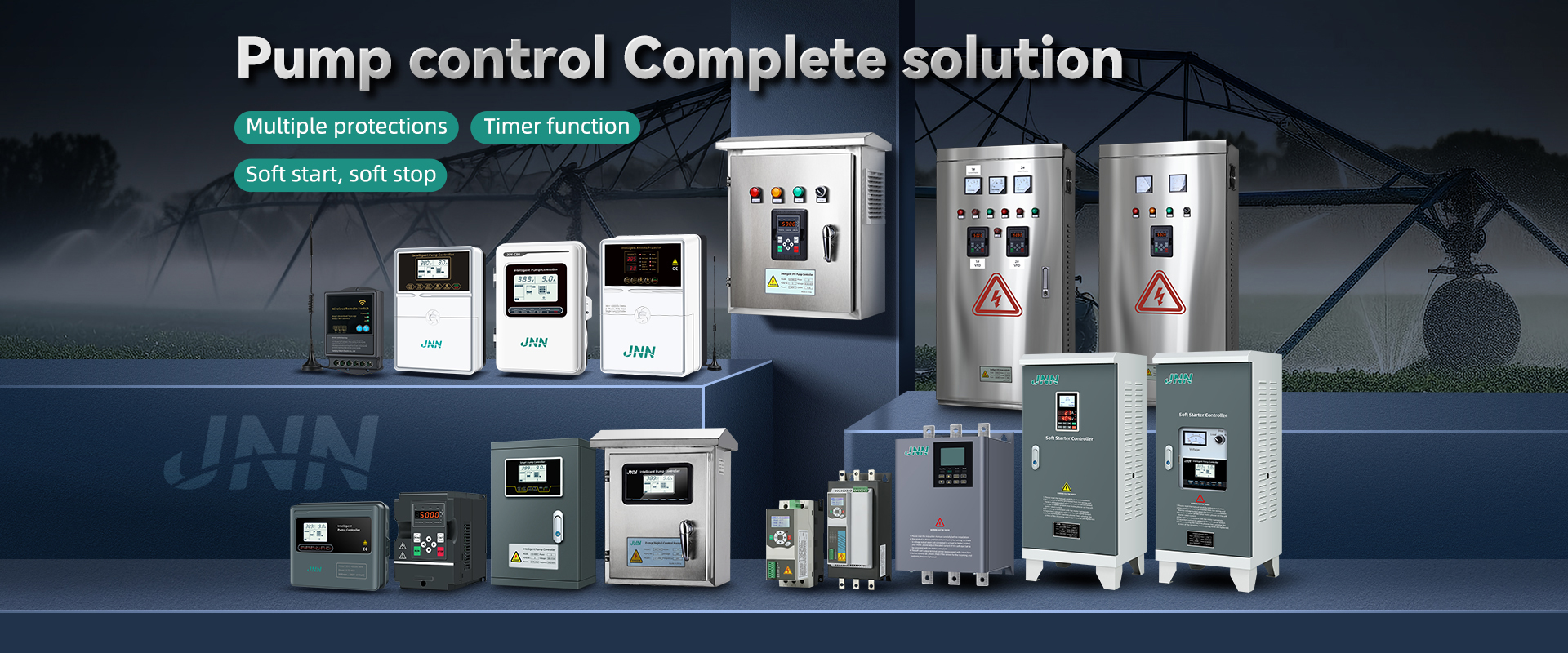
Water pump controllers play a crucial role in modern water management systems, ensuring efficiency, automation, and protection of pumps from damage. If you have ever dealt with fluctuating water pressure, dry-running pumps, or manual operation issues, then an automatic water pump controller might be the perfect solution for you. But did you know that there are different types of automatic water pump controllers? In this article, we will explore the three basic types, how they work, their advantages, and which one might be the best fit for your needs.
What Is an Automatic Water Pump Controller?
An automatic water pump controller is a device designed to regulate the operation of a water pump without manual intervention. It automates switching the pump on and off based on water levels, pressure, or flow rate, helping to maintain consistent water supply while protecting the pump from potential damage.
In simple terms, these controllers eliminate the need to manually monitor and adjust the pump, ensuring it runs only when necessary and stops when the desired conditions are met. They can prevent dry running, reduce energy consumption, and extend the life of the pump. Automatic controllers are commonly used in homes, agriculture, industries, and commercial water systems.
Now, let’s break down the three main types of automatic water pump controllers and how they function.
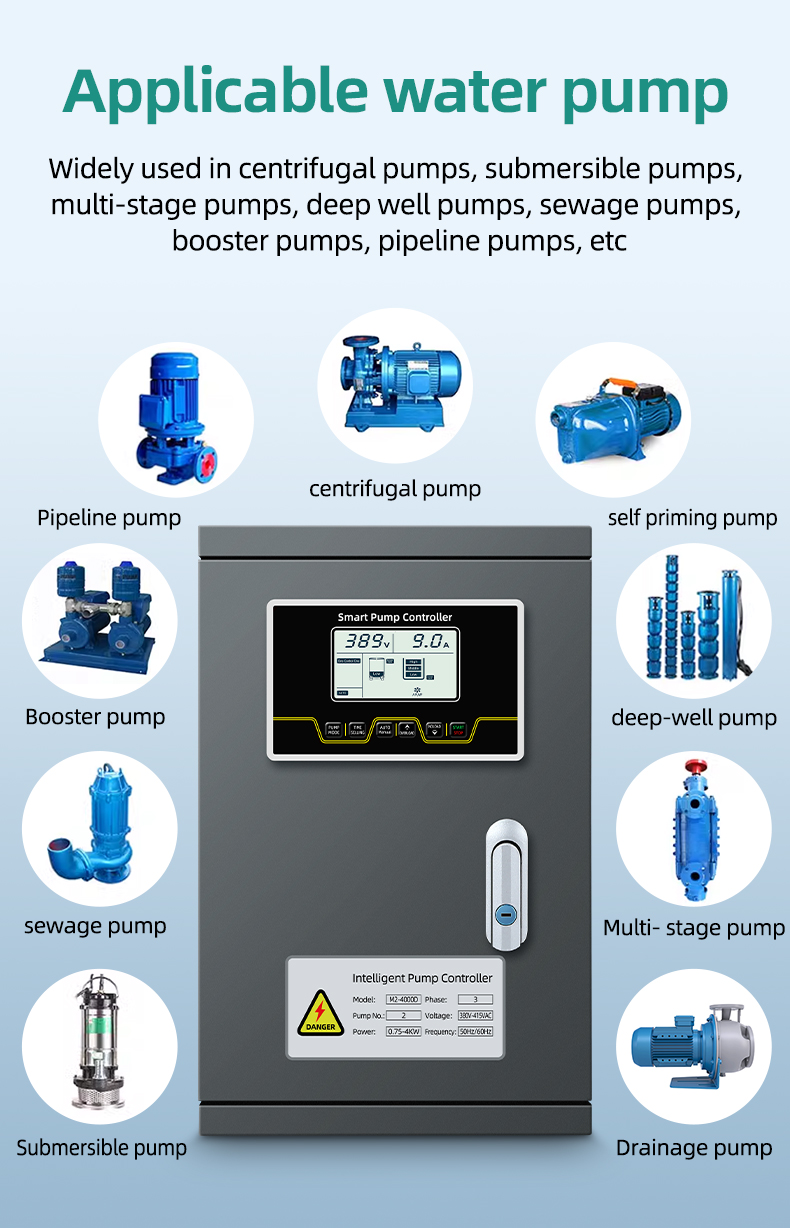
1. Float Switch Controllers – The Simplest and Most Common Choice
Float switch controllers are among the most widely used types of automatic water well pump control boxes, especially in domestic and industrial water tanks. These devices operate using a floating mechanism that rises and falls with the water level.
How It Works
When the water level drops below a pre-set point, the float switch triggers the pump to start refilling the tank.
As the water level rises, the float switch moves upward, and once it reaches a certain point, it signals the pump to stop.
Advantages
✔ Simple design and easy installation.
✔ Reliable and cost-effective.
✔ Works well in household water tanks, sump pumps, and industrial applications.
Potential Downsides
Mechanical wear and tear over time.
Susceptible to debris interference, especially in dirty water environments.
2. Pressure Switch Controllers – Ideal for Pressurized Water Systems
Pressure switch controllers are widely used in well pumps, home water supply systems, and irrigation setups where maintaining consistent water pressure is essential.
How It Works
These controllers detect changes in water pressure within the system.
When pressure drops below a certain threshold (e.g., when a tap is opened), the controller activates the pump.
When the pressure reaches a set upper limit, the pump shuts off automatically.
Advantages
✔ Maintains steady water pressure, improving comfort and efficiency.
✔ Protects the pump from dry running by shutting it off when no water is detected.
✔ Often comes with adjustable settings to customize pressure levels.
Potential Downsides
Installation may require an electrician if electrical wiring is needed.
Pressure settings need to be correctly configured to avoid short cycling or excessive wear on the pump.
3. Electronic Sensor Controllers – The High-Tech and Precise Option
Electronic sensor controllers are the most advanced type of automatic water pump controllers. They use sensors, such as capacitive, ultrasonic, or conductive probes, to detect water levels and flow. These controllers are commonly used in industrial applications, smart water management systems, and even modern residential setups.
How It Works
The controller continuously monitors water levels or flow using its electronic sensors.
It automatically starts the pump when water is needed and stops it when the desired level is reached.
Some advanced models can integrate with smart home systems for remote monitoring and control.
Advantages
✔ Highly accurate and reliable.
✔ No moving mechanical parts, making them more durable.
✔ Ideal for large-scale applications and smart automation systems.
✔ Can include additional features such as water quality monitoring and energy-saving functions.
Potential Downsides
More expensive than float switch and pressure switch controllers.
May require professional installation and configuration.
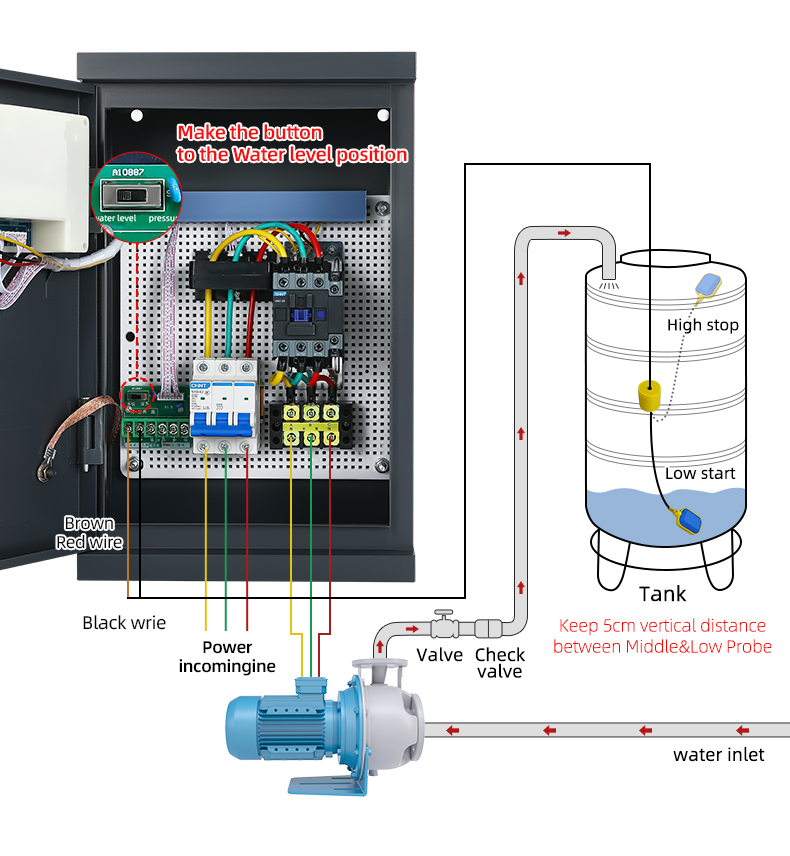
Which Automatic Water Pump Controller Is Right for You?
The best controller for your system depends on your specific needs:
If you need a simple and affordable solution for a household water tank, a float switch controller is a great choice.
If you rely on a pressurized water system and need stable pressure control, go for a pressure switch controller.
If you want a high-tech, precise, and smart water management solution, an electronic sensor controller is the way to go.
Each type has its strengths and weaknesses, so choosing the right one will depend on your application, budget, and the level of automation you require.
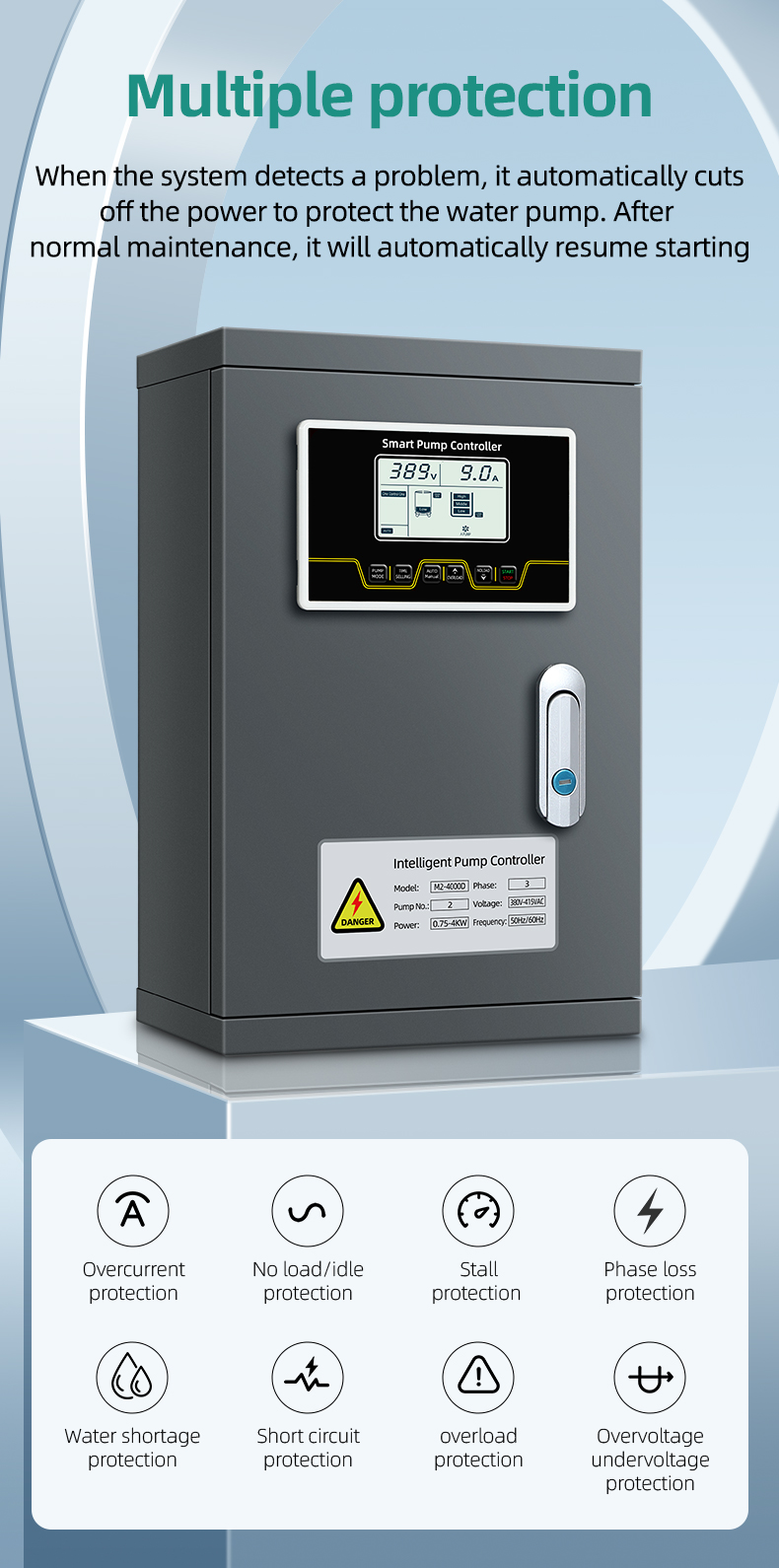
Common Issues and Troubleshooting Tips for Automatic Pump Controllers
While automatic water well pump controllers are designed for convenience, they can sometimes encounter issues. Here are some common problems and possible solutions:
Pump not starting automatically – Check if the power supply is working and ensure there are no blockages in the pipes or valves.
Pump runs continuously – This could indicate a leak in the system, incorrect pressure settings, or a malfunctioning sensor.
Float switch not working properly – Make sure it’s free of debris and properly positioned within the tank.
Electronic sensor errors – If the sensors are giving incorrect readings, check for dust, dirt, or electrical interference.
Most issues can be resolved with basic troubleshooting, but for complex problems, consulting the manufacturer's manual or a professional technician (JNN) is recommended.
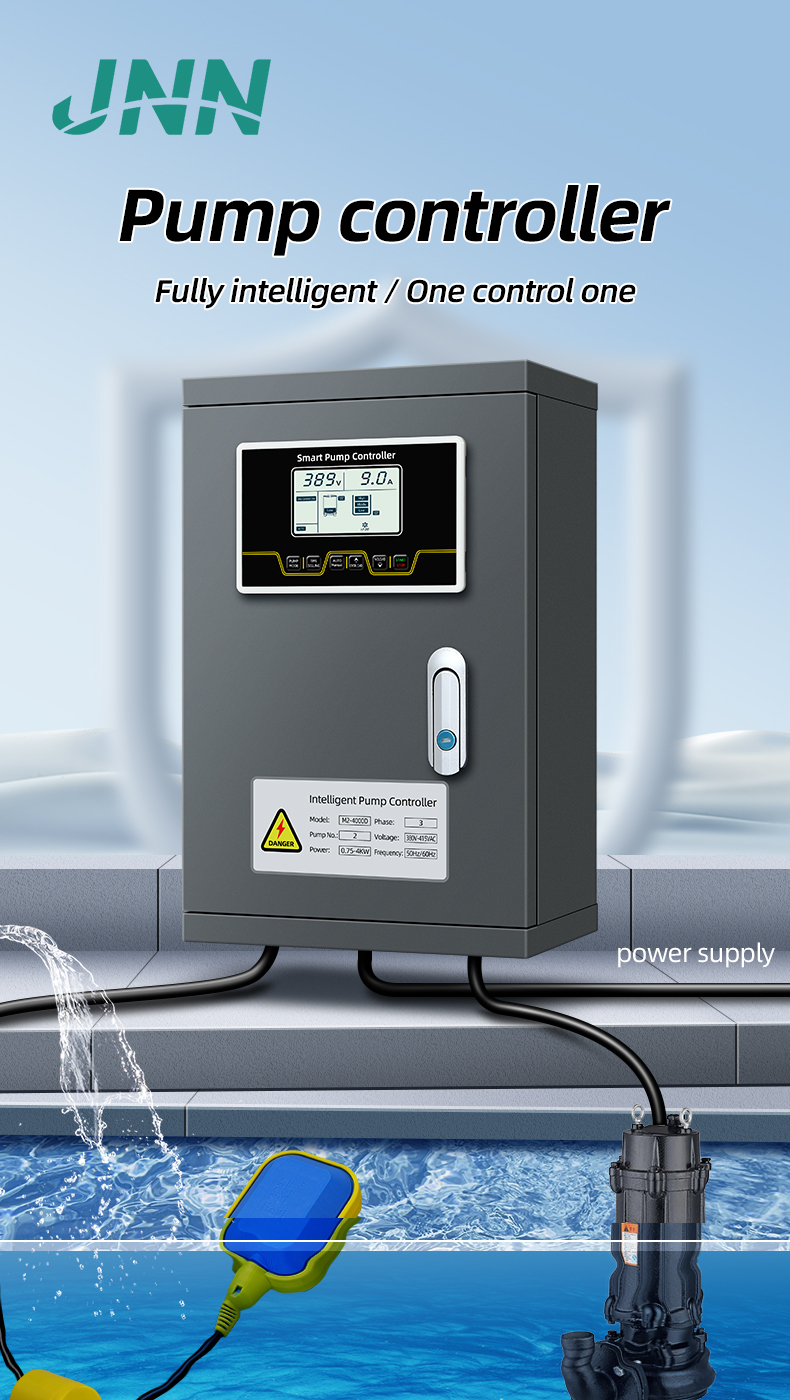
Conclusion
Automatic water pump control boxes have revolutionized water management, making systems more efficient, reliable, and easy to operate. Whether you choose a float switch, pressure switch, or electronic sensor controller, each type serves a distinct purpose and enhances the way water is controlled and distributed.
If you’re looking to install an automatic water pump controller, consider your specific needs, budget, and level of automation desired. With the right choice, you’ll enjoy improved efficiency, lower energy consumption, and peace of mind knowing that your pump is operating optimally without the need for constant manual intervention.
Finally, if you have any questions or would like to consult, please feel free to contact us JNN!
























